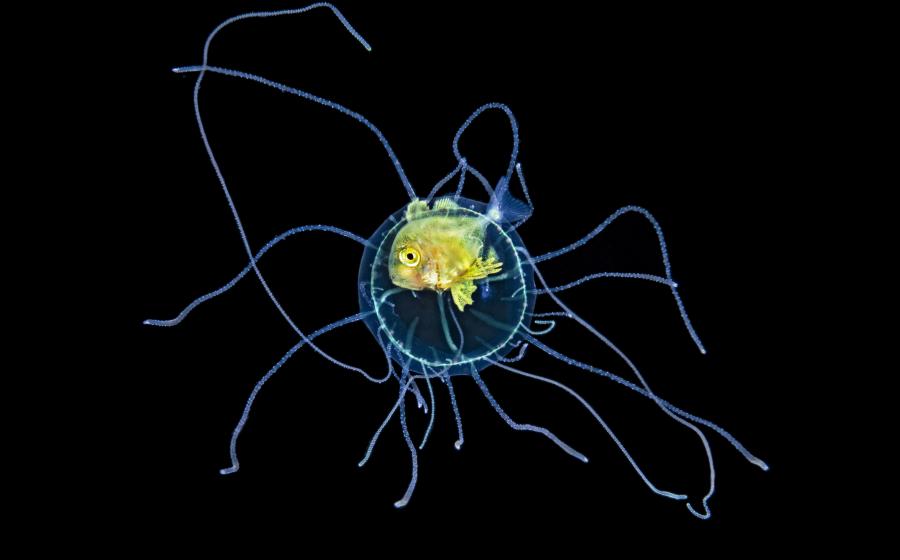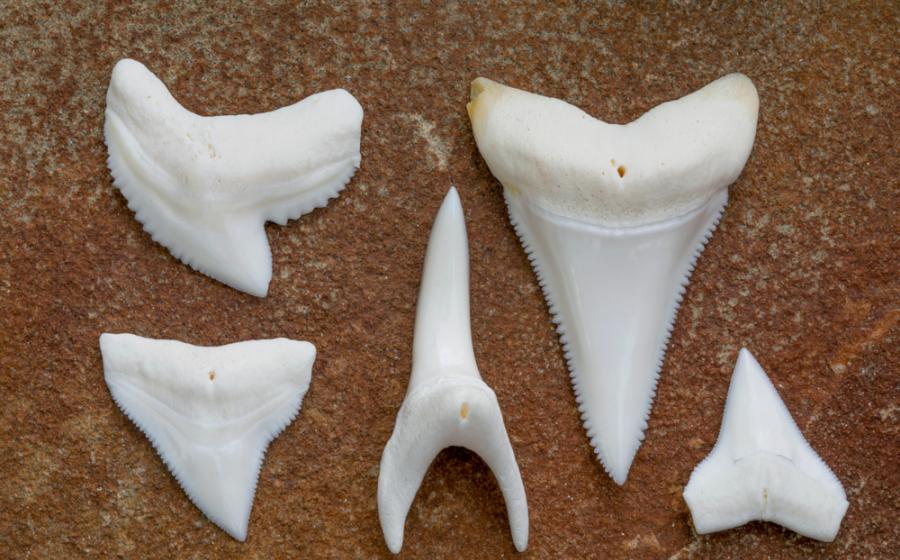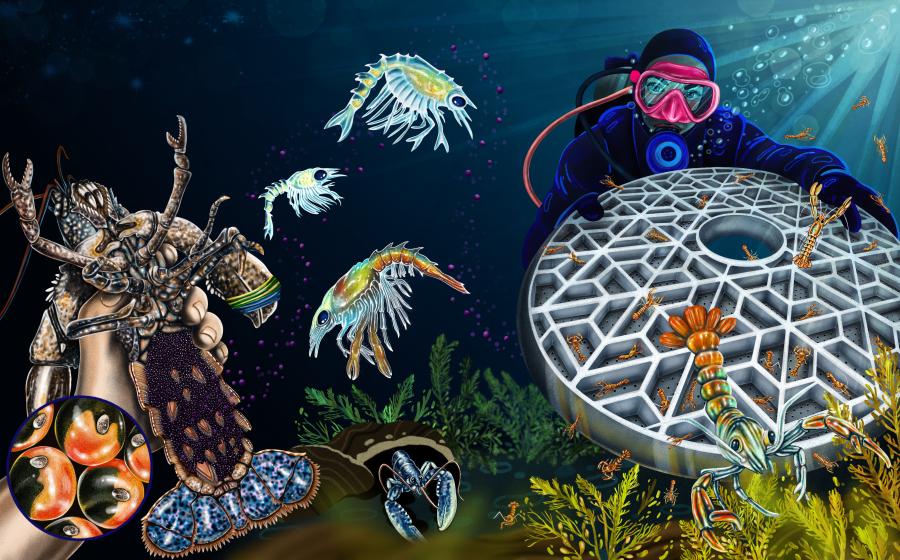The Best Destinations for Wreck Diving
1. Red Sea

Tobias FriedrichA diver illuminates a World War II-era motorcycle inside the wreck of the SS Thistlegorm, sunk in the northern Red Sea near Sharm el-Sheik, Egypt.
The Aggressor Adventures fleet of liveaboards runs two yachts in the Red Sea. One cruises the reefs and walls of the south. The other dives “nothing but wrecks,” says Jay Roberts, operations manager for the company.
Red Sea Aggressor II packs 21 dives into a seven-day charter, offering two distinct itineraries. The crown jewel of the area is of course the SS Thistlegorm, the most photographed World War II wreck in the Red Sea thanks to its cargo hold full of jeeps, motorcycles and other battle supplies.
The other ships on the wreck itinerary aren’t as famous, but they are equally memorable.
The SS Dunraven, downed in 1876, sits shallow, in 50 to 95 feet of water. With less depth comes more light. “It has thousands of glassfish, and the sunlight reflecting off the fish is incredible,” says Roberts.
The wreck has since broken into three, and “each part has its own ecosystem,” says Roberts. “That one to me is one of the super impressive wrecks of the trip for the marine life alone.”
READERS PICKS
LIVEABOARDS
Red Sea Aggressor II, Egypt
Red Sea Aggressor III, Egypt
2. Aruba
Take one look at the high-rise hotels along Aruba’s Palm Beach, and you might find it hard to imagine that this rummy paradise played a role in World War II. Look below the surface, and you can find the SS Antilla, a 398-foot cargoship scuttled here by the Germans in 1940 to keep it from falling into the hands of the Dutch.
“One of the first things divers want to do here is the Antilla because of the history,” says Jennifer Ruiz, divemaster with Red Sail Sports Aruba.
In the more than 80 years since its scuttling, the ship’s lore has grown alongside the corals. Today, this reeflike wreck provides abundant habitat for sea turtles, grouper, eels and fish—more than enough to deliver as much color as the history itself.
Related Reading: Tiny Yet Stunning: Best Destinations to Dive for Macro Life
3. Florida Keys
Equating the Keys with only purpose-sunk wrecks—such as the iconic Spiegel Grove, Duane and Bibb of Key Largo—is overlooking the rich past of these storied isles.
During World War II, German U-boats patrolled the Atlantic coast, leading cargo ships to travel with all lights out—not even a cigarette could be puffed on deck at night.
It was in that darkness that the 360-foot Benwood, a merchant marine freighter, collided with the Robert C. Tuttle steam tanker in 1942.
“The Benwood basically backed onto the reef to save itself,” says Dan Dawson, owner of Horizon Divers in Key Largo. That move allowed the crew to salvage much of the cargo, but the ship was never again seaworthy. Today, it lies in 25 to 45 feet of water.
“You can see the indentation of where the ship crunched into the Tuttle,” says Dawson.
Most of the hull is long gone, and yet the ribs remain, sectioning the ship into patches of soft coral gardens. Nurse sharks and green and loggerhead sea turtles nestle in between it all.
This historic ship—along with other historic wrecks and sites such as the City of Washington wreck, the Spanish galleon anchor at Molasses Reef and the ballast stones on Horseshoe Reef—is far from shiny. It doesn’t have a perfectly preserved metal hull cleaned for maximum diver use. What it has is a story that can’t be replicated. And best of all, the Keys is home to countless such sites that keep the past alive.
READERS PICKS
RESORTS
- Amoray Dive Resort, Key Largo, Florida Keys Courtyard by Marriott Key Largo, Florida Keys Holiday Inn, Key Largo, Florida Keys Marina Del Mar, Key Largo, Florida Keys
OPERATORS
- Amoray Dive Center, Key Largo, Florida Keys Captain Hook’s Dive Key West, Florida Keys Horizon Divers, Key Largo, Florida Keys Islamorada Dive Center, Florida Keys Rainbow Reef, Key Largo, Florida Keys
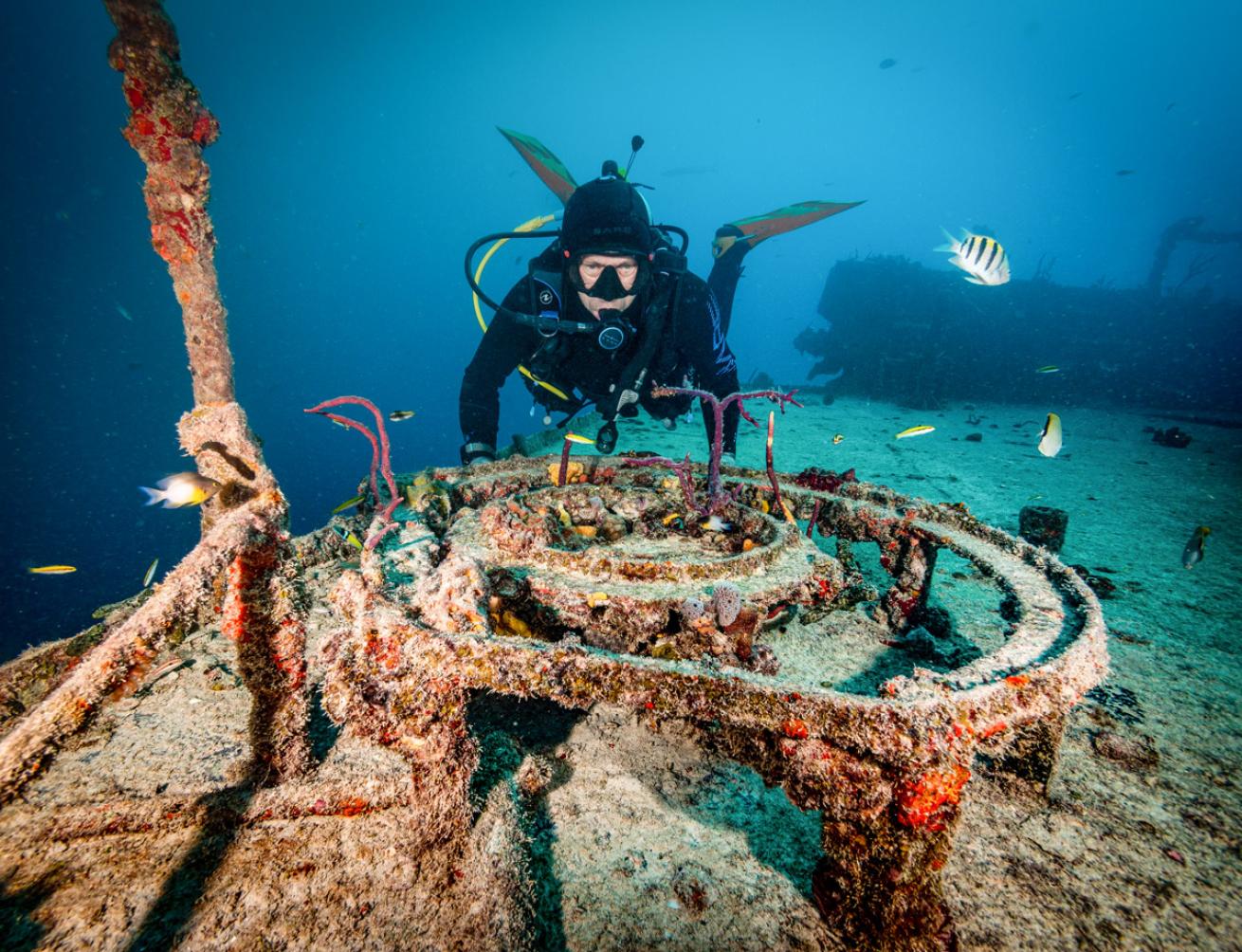
Olga TorreyThe 510-foot Spiegel Grove is one of the Florida Keys’ most iconic wrecks.
4. St. Croix
Five wrecks lie clustered off the west side of St. Croix—so close together you could do them as a shore dive, but to make the most of so much metal, these structures are best done as two boat dives.
The first and deeper dive takes on the 95-foot Coakley Bay oil refinery tug and the 177-foot car carrier Rosaomaira. The Rosa in particular shines for its highlights: southern stingrays that carpet the sand at 100 feet, a goliath grouper often patrolling the deck and angelfish gathering around the ship’s prop.
Next, the shallower set of wrecks allows divers to take their time, starting with the Northwind tug in the sand at 56 feet. “Then we move onto what we call the ‘tissue box’—the big barge,” says John Cohen, instructor with Cane Bay Dive Shop, a PADI Five Star Dive Center.
This roundup of wrecks also includes a retired NOAA Hydrolab habitat and the Suffolk Maid, a 144-foot trawler crawling with life: lobsters, green moray eels and porcupinefish. This site is dotted with patch reef in between, adding more variety to the mix. “I actually prefer the shallower wrecks because you get to see a bit of everything,” says Cohen.
5. Bahamas
Don’t expect an exact number of wrecks on Stuart Cove’s Dive Bahamas’ menu—the number changes regularly as more artificial reefs are created, mostly thanks to Cove himself.
The Tears of Allah, a 92-foot cargo boat, was the first he sank, back in 1982 for the James Bond movie Never Say Never Again. It’s in just 45 feet of water, making it a favorite among newer divers and photographers craving big swaths of light.
One of Cove’s most recent additions is a 250-foot former freighter, the Atlantic Breeze. “We actually drove it to the site,” says Cove of the location, set in just 55 feet of water and perfectly positioned alongside two other artificial reefs—a perfect trio that stands testament to well-crafted planning.
Much of the wreckage has been claimed by tropical marine life, from frogfish to nudibranch species like the Florida regal sea goddess.
READERS PICKS
OPERATORS
- Stuart Cove’s Dive Bahamas, New Providence
LIVEABOARDS
Aqua Cat, Bahamas
Bahamas Aggressor
Blackbeard’s Cruises, Bahamas
Cat Ppalu, Bahamas
Related Reading: Scuba Diving Travel
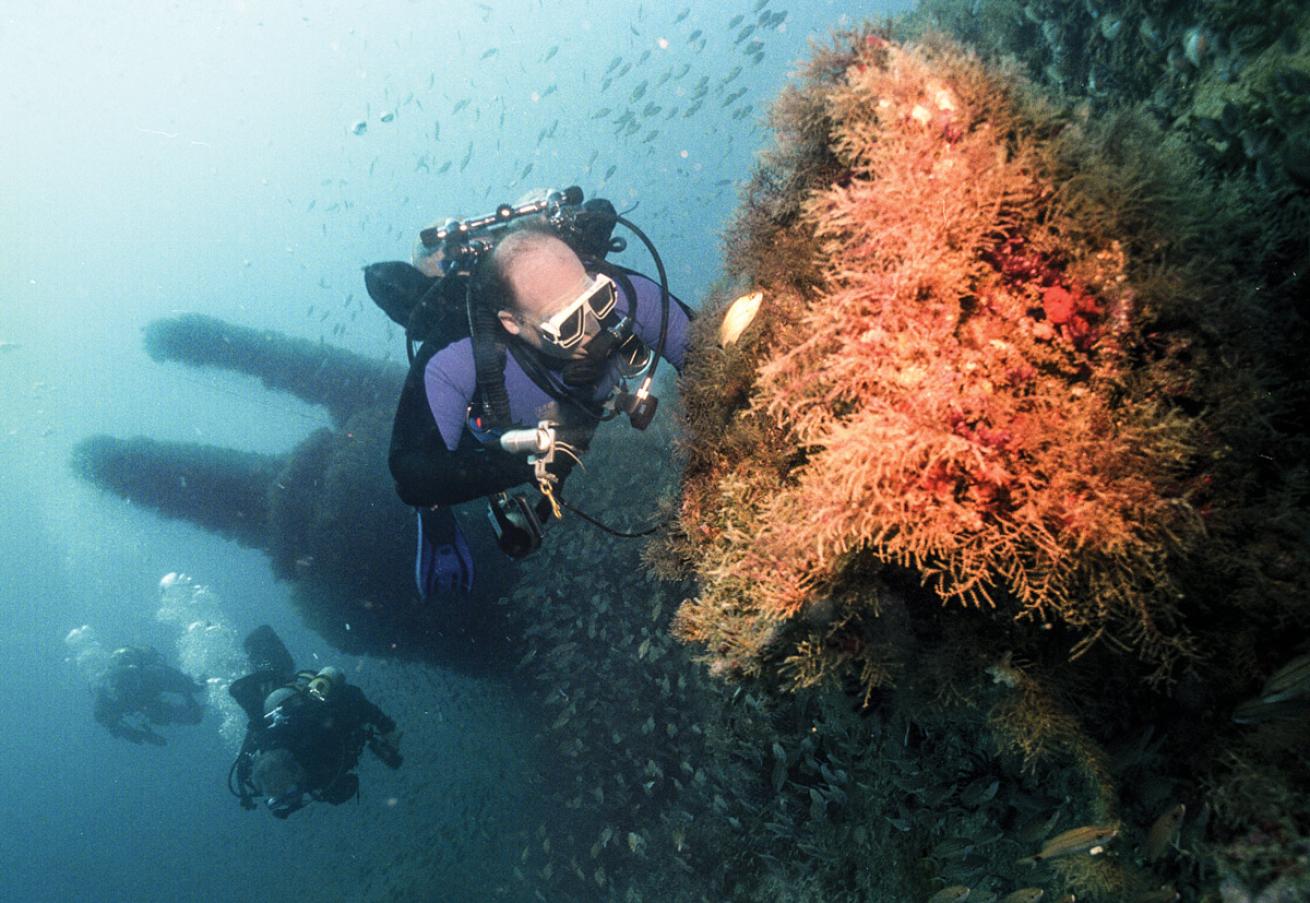
Larry CohenThe wreck of the U-352, sunk in May 1942 off Cape Hatteras, North Carolina.
6. North Carolina
Tell people you’ve been diving off the North Carolina coast, and they’ll ask you what you thought of the U-352. Exciting as it is to lay eyes on a German submarine, it’s just one of 13 wrecks that Olympus Dive Center and other local operators regularly drop in on.
Just next to the U-boat is a site that Bobby Purifoy, owner of Olympus,names a favorite for its history.
Traveling in darkness to avoid enemy detection, the SS Florida collided with the Schurz, a former German armed cruiser that the U.S. Navy seized and refitted. It was 1918—in the midst of World War I.
“Most people don’t know that there were German U-boats along this coast during that war,” Purifoy says of the Atlantic seaboard.
Weather and worms have claimed much of the wood of the ship, but the metal ribs remain, along with the anchor, four steam boilers, lifeboat davits and the prop shaft.
Much of the wreckage has largely been claimed by tropical marine life, from frogfish to nudibranch species like the Florida regal sea goddess nudi-branch. It also sees a massive volume of marine life every summer.
“The Schurz gets a baitball on it the size of the entire ship,” says Purifoy.
A site like this is fundamentally the opposite of a purpose-sunk wreck. Much of the recognizable ship shape is long gone, but the history and the marine life still flourish.
“The segment of the population that really appreciates historic shipwrecks really digs it,” Purifoy says.
CARIBBEAN AND ATLANTIC
Aruba
Cayman Islands
Bahamas
Bay Islands
St. Lucia
Curaçao
Bonaire
U.S. Virgin Islands
Mexico
Turks and Caicos
Belize
PACIFIC AND INDIAN
Red Sea
Hawaii
Philippines
Mexico
Indonesia
Maldives
Fiji
U.S. AND CANADA
North Carolina
Great Lakes
Florida Keys
Florida
Texas
California
What Is Readers Choice?
More than 3,000 readers cast their vote in our 2023 survey to decide this year’s Readers Choice awards. Here we feature some of the top destinations, listing in alphabetical order the winning resorts, operators and liveaboards serving those areas. More at scubadiving.com/readerschoice





